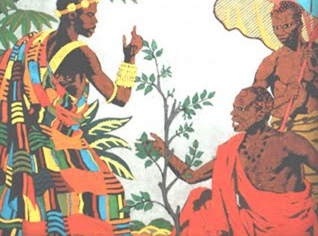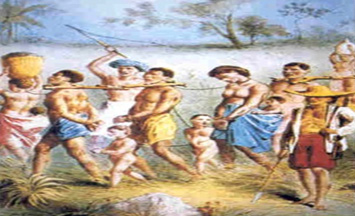The Bantus were some tribes inhabiting central areas of the African continent’s coasts. They emigrated from the Guinean Golf to the South, getting close to the Cassai River. Angola’s first people were speaking the Khoisan language. Bantus remained inside actual Angola’s borders. They blended with indigenous people (the Tchokwes). Then, a melting took place between the two tribes. Nowadays, they are still called Lundas-Tchokwes by the Bakongos, who are living in the North of Angola.

In 1482, the Portuguese explorer Diogo Cão, arrived on the banks of the Congo River, the border between Congo and Cabinda. During that period, Congo was a kingdom situated at Angola’s North and ruled by Mani Congo. It’s capital was Mbanza. Portuguese people had been welcomed by the king Nzinga Nkuwu. Relationships between Europeans and African, at the time, were quite good. A trade exchange had been set up in order to sell merchandise, weapons, then slaves. Portugues people gained the Congolese king’s trust and managed to make him convert to Catholicism. In 1491, Portuguese decided to give the Congolese kingdom the name of São Salvador. But in 1507; Nzinga Nkuwu died and was replaced by Mani Congo who entirely transformed the mutual relationship. The Portuguese people, interested in the gold mines, declared war on the new king. Mani Congo has been killed during the conflict.

Congo kingdom has been conquered then destroyed and ended by completely disappear. The Portuguese domination didn’t stop there and spread all around, keeping on submitting other tribes as the Ngolas from the Ndongo kingdom, in the hills of Cuanza River. The name Angola has been proclaimed by the originous people, before the arrival of the Portuguese in Africa. During that period, Portuguese domination was very strong. São Paulo de Assunção de Luanda was finally founded, Angola’s capital, main place of black slaves’ exportation towards Americas (Brazil, Cuba and other destinations).

Inhabitants close to the Congo River, North of Angola, blended with Europeans. There was a complicity with African tribes about trade of merchandise: clothes, wines, weapons…etc, in exchange of slaves. Since the XVI century, 16 millions of slaves have been reported being transported in slave ships. Only 4 millions survived the trip to Americas. The majority of abducted black people were Bantus from Angola.
The mass exodus of the Angolese population happened during the XVII century. The human market being weak on Angola’s coasts, Portuguese captured members of the Yoruba tribe, from Angola. Between Brazil and Angola existed an alliance for human traffic. In the end, all of this created a melting pot of cultures and languages. Slave trade in Angola has been forbidden only in 1836.
Ongolo :
[youtube]http://youtu.be/zlqnRIMAtTc[/youtube]
Vadiação Capoeira Antiga :
[youtube]http://youtu.be/ObGj2e2bsAc[/youtube]
The fight Ag’ya Danmye Ladja :
[youtube]http://www.youtube.com/watch?v=Rl4CEEse_fI[/youtube]
Movie “Quilombo de Palmares”
[youtube]https://youtu.be/v7CYGqJsFvU[/youtube]
Movie “De Galanga no Congo a Chico Rei em Ouro Preto”
[youtube]http://youtu.be/Brbc4WyFhQw[/youtube]
Movie “Ganga Zumba”
[youtube]https://youtu.be/pjEiYGwOxv0[/youtube]




